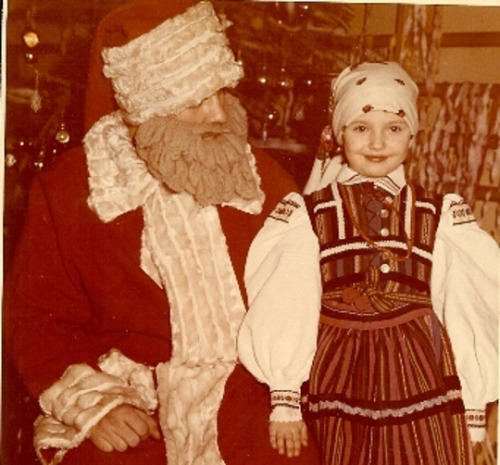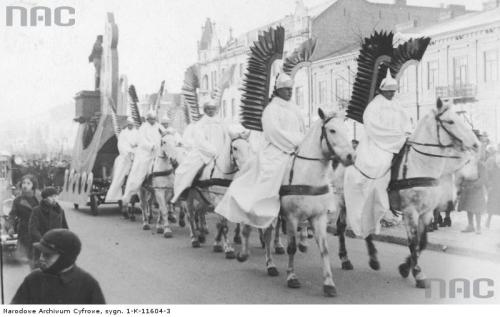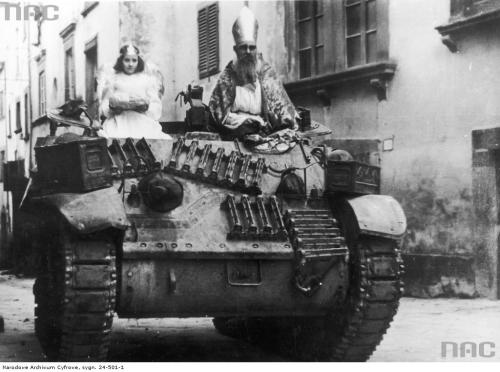lamus-dworski:Mikołajki - St. Nicholas’ Day in Poland.The Mikołajki custom as known nowadays, focuse
lamus-dworski:Mikołajki - St. Nicholas’ Day in Poland.The Mikołajki custom as known nowadays, focused on the figure of St. Nicholas [Polish: Święty Mikołaj] bringing the gifts to the children, started to become widespread in Poland only in the 19th century and gained the biggest popularity only after the end of the 2nd World War. Initially, until the end of 19th century, it was known in that way mostly among the Polish nobility.In the old days St. Nicholas was worshipped in Poland as the patron saint of the shepherds and their herds, also the guardian of wolves. He would make sure the wolves aren’t dying of hunger, but also aren’t too much of a threat to the domestic animals. In the regions closest to the Carpathian mountains and in the Eastern parts of Poland it was believed that the wolves gather on the night between 5th/6th December in order to debrief of the events to St. Nicholas or debate on the distribution of prey. Shepherds would pray to St. Nicholas, light fireplaces and clean their cottages while ending the herding season at the end of autumn. In some regions the shepherds would also leave offerings for St. Nicholas on the altars of local churches, asking for protection from the wolves in the following year.Starym ksiądz pleban mówił z ambony zwyczajem,Niech się każdy podzieli z świętym Mikołajem;Nie chce li kto w dobytku szkody mieć od wilka,Więc my pośle barana, gęsi i kur kilka.In some regions the villagers would offer him wreaths made of flax, hemp and various herbs.Since around 18th century so-called “St. Nicholas boxes” were popular, set up close to the churches in order to collect small donations, often gifted to the poorest inhabitants of the village or to those girls who couldn’t afford a dowry.In many regions of Poland processions dedicated to St. Nicholas were organized, when a person dressed as the saint was visiting the locals, accompanied by various symbolic figures, such as a “devil”, “angel”, “priest”, “cheemney sweeper”, “soldier” and others. The gifts were only symbolic as well and most people, regardless of the age, would get for example a juicy apple. The misbehaving kids would get a bag of nut shells, peels of the onions or even a dead mouse. Such kinds of processions were suppressed during the communist times, when all kinds of “private” gathering events were seen as a threat to the regime.Nowadays the St. Nicholas Day became an important day to the children. They get gifts from the St. Nicholas on the night between the 5th/6th December, hidden somewhere close to the bed. Most of the schools organize a Mikołajki event when the children draw cards with each other’s names written on them and then exchange small gifts during the schoolday closest to the 6th of December. Such gift exchange is also popular even among university students or coworkers.In many parts of Poland the gifts hidden under the Christmas tree on 24th December are believed to be left by an angel [Aniołek] or the “Little Child” [Dzieciątko] - Little Jesus.Girl in traditional costume of the Opoczno region during Mikołajki day in a nursery school, 1980s in Poland [source].St. Nicholas’ sledge led by “angels” - Polish Winged Hussars. Parade in Częstochowa, 1933 [source].Mikołajki organized during the 2nd World War by the troops of the Polish Armed Forces in the West stationing in Bibbiena, Italy, 1944 [source].“Chodzyni Mikołajów”, a local custom still practiced on the 6th December in the Beskidy Mountains, when a person dressed as St. Nicholas, accompanied by devils, angels and other figures, visits local villages to hand out gifts to the good and punish the misbehaving. Istebna village, Poland [source].Group in traditional costumes participating in the “chodzyni Mikołajów“ custom. Each figure was meaningful, symbolizing an aspect of life, for example a newlywed couple representing the transitional state between the youth and the adulthood [photo source].19th-century chapel of St. Nicholas with a wolf in Kryłów, Poland [source].My sources / book recommendations [in Polish only]. -- source link
Tumblr Blog : lamus-dworski.tumblr.com
#polish tradition#poland#saint nicholas#folk culture#ethnology





